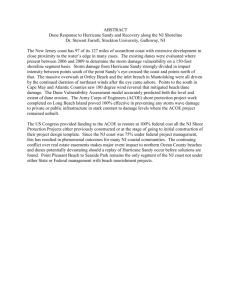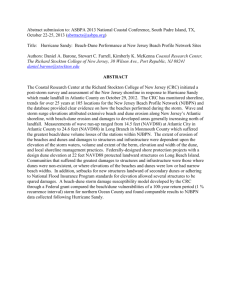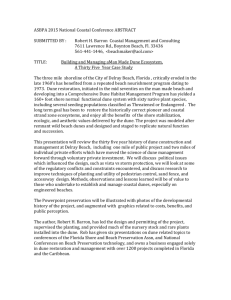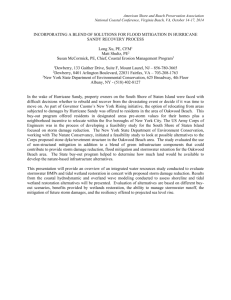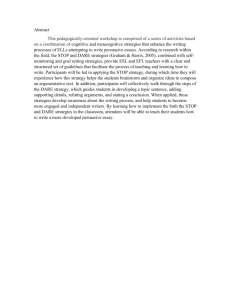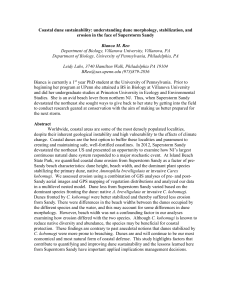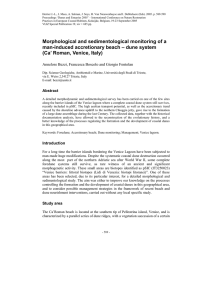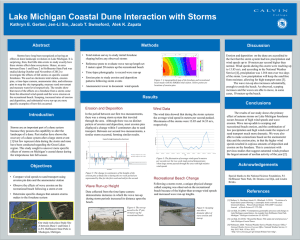Integrating Dunes into Beach Nourishment Project Design in Dare
advertisement
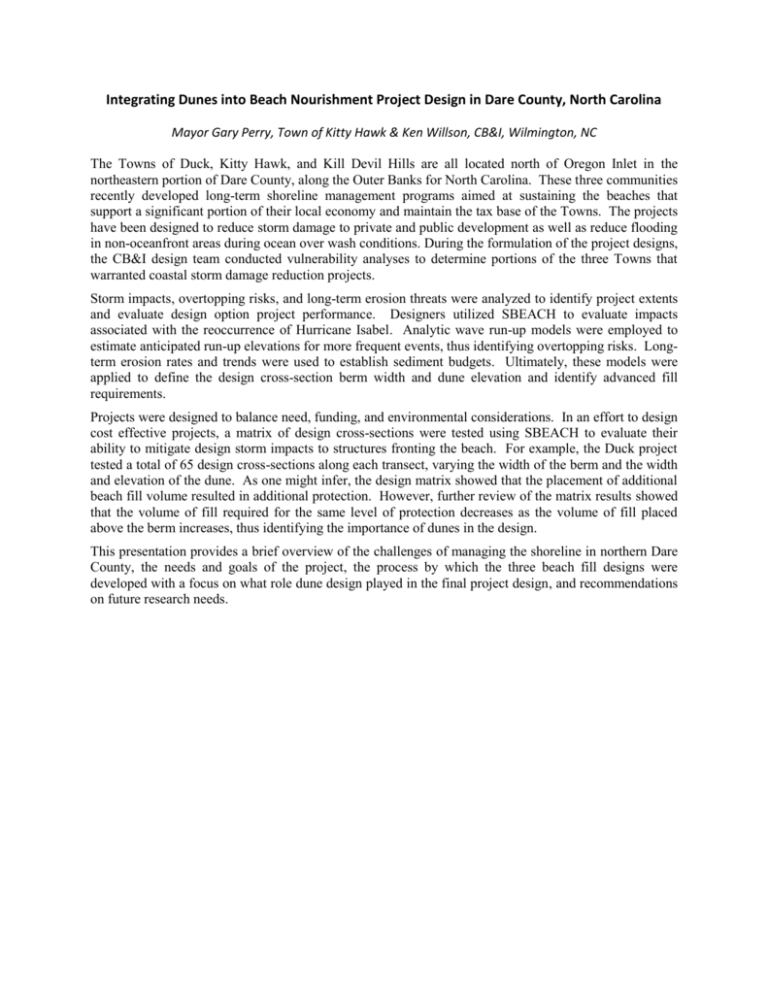
Integrating Dunes into Beach Nourishment Project Design in Dare County, North Carolina Mayor Gary Perry, Town of Kitty Hawk & Ken Willson, CB&I, Wilmington, NC The Towns of Duck, Kitty Hawk, and Kill Devil Hills are all located north of Oregon Inlet in the northeastern portion of Dare County, along the Outer Banks for North Carolina. These three communities recently developed long-term shoreline management programs aimed at sustaining the beaches that support a significant portion of their local economy and maintain the tax base of the Towns. The projects have been designed to reduce storm damage to private and public development as well as reduce flooding in non-oceanfront areas during ocean over wash conditions. During the formulation of the project designs, the CB&I design team conducted vulnerability analyses to determine portions of the three Towns that warranted coastal storm damage reduction projects. Storm impacts, overtopping risks, and long-term erosion threats were analyzed to identify project extents and evaluate design option project performance. Designers utilized SBEACH to evaluate impacts associated with the reoccurrence of Hurricane Isabel. Analytic wave run-up models were employed to estimate anticipated run-up elevations for more frequent events, thus identifying overtopping risks. Longterm erosion rates and trends were used to establish sediment budgets. Ultimately, these models were applied to define the design cross-section berm width and dune elevation and identify advanced fill requirements. Projects were designed to balance need, funding, and environmental considerations. In an effort to design cost effective projects, a matrix of design cross-sections were tested using SBEACH to evaluate their ability to mitigate design storm impacts to structures fronting the beach. For example, the Duck project tested a total of 65 design cross-sections along each transect, varying the width of the berm and the width and elevation of the dune. As one might infer, the design matrix showed that the placement of additional beach fill volume resulted in additional protection. However, further review of the matrix results showed that the volume of fill required for the same level of protection decreases as the volume of fill placed above the berm increases, thus identifying the importance of dunes in the design. This presentation provides a brief overview of the challenges of managing the shoreline in northern Dare County, the needs and goals of the project, the process by which the three beach fill designs were developed with a focus on what role dune design played in the final project design, and recommendations on future research needs.

